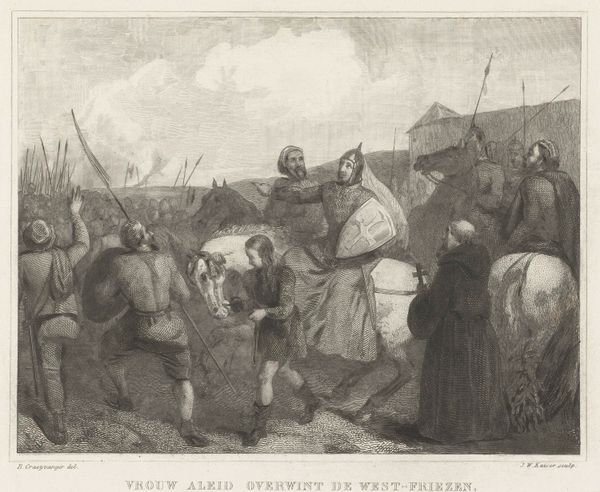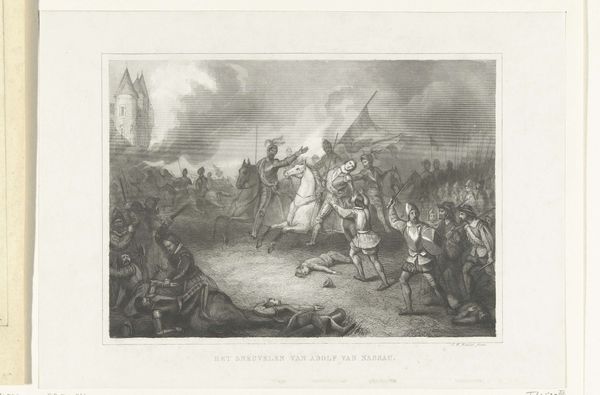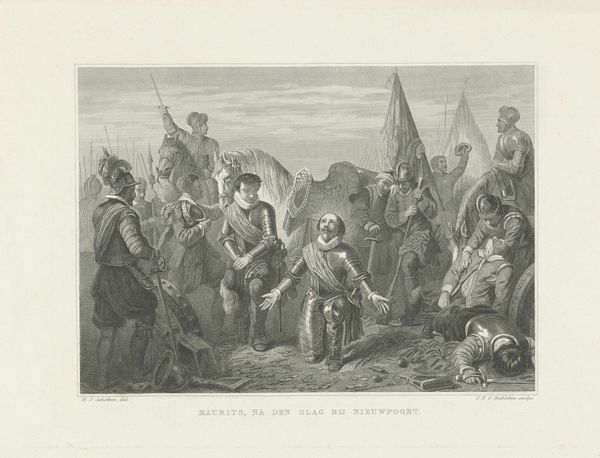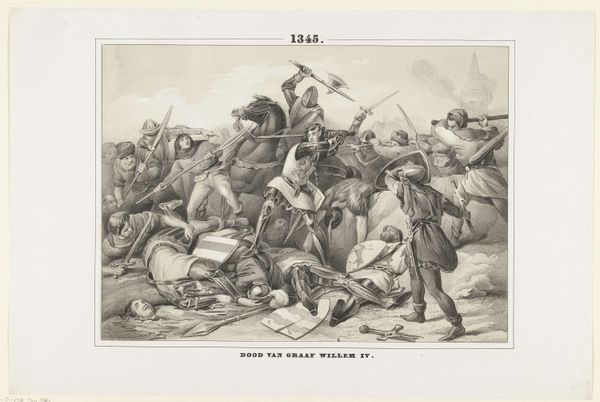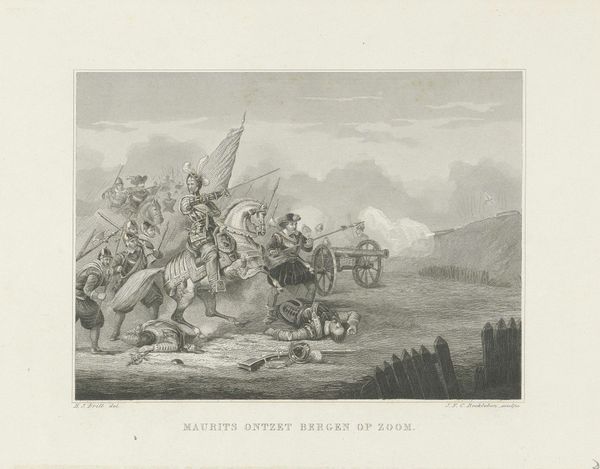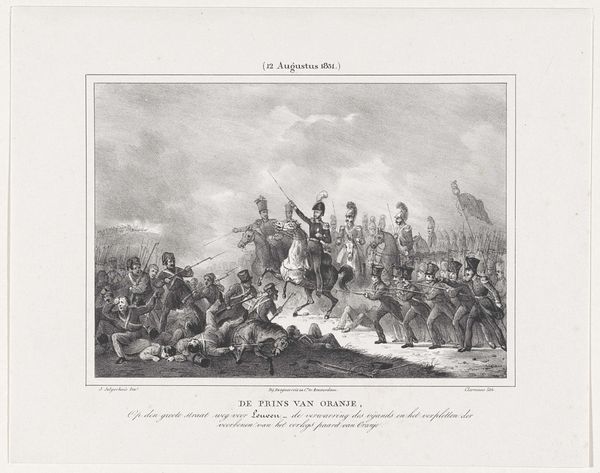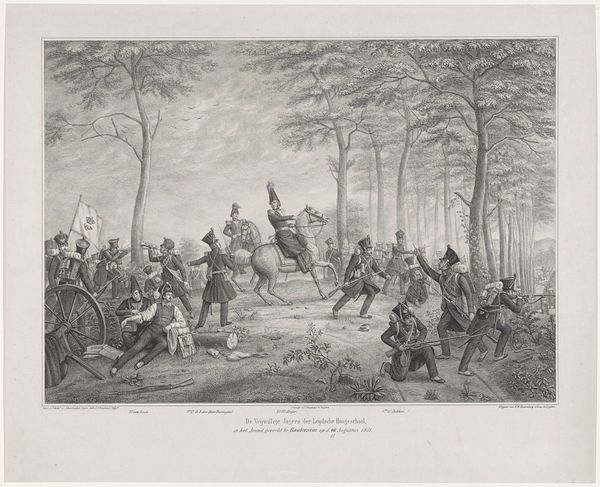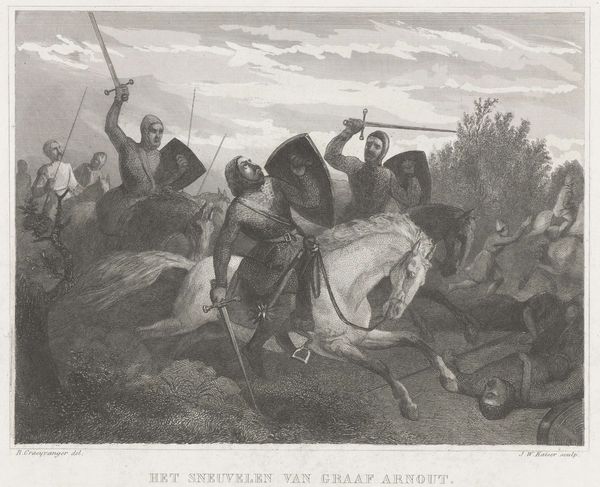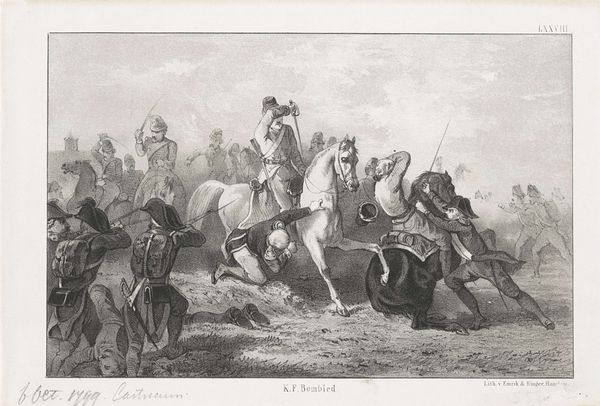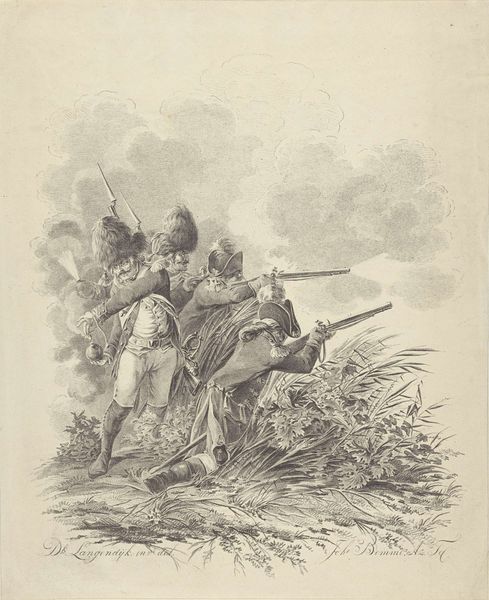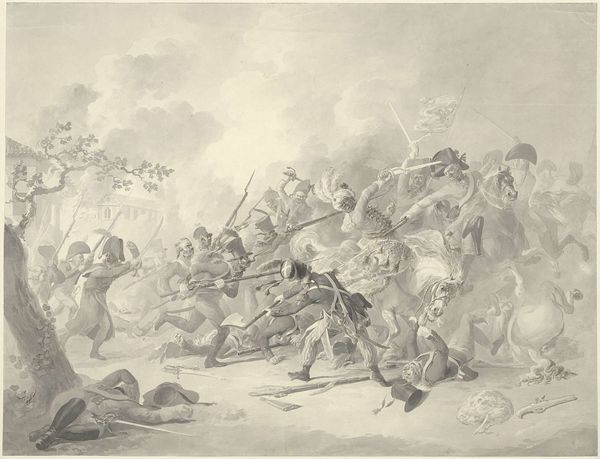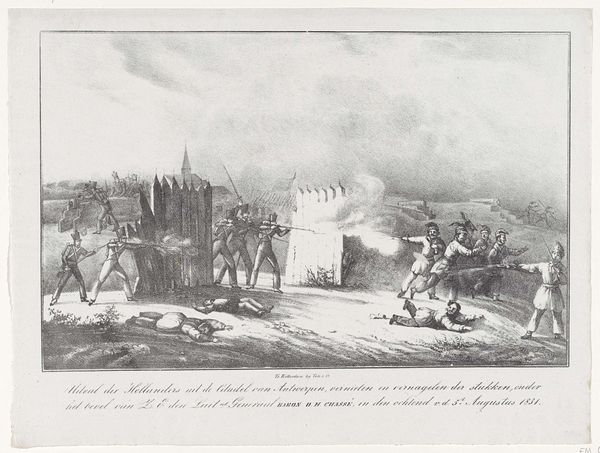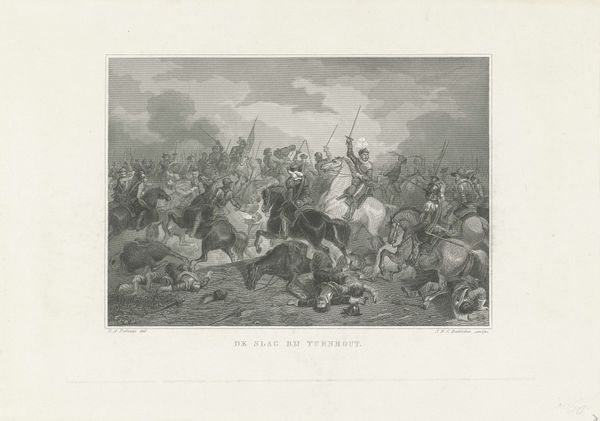
Graaf Willem II zakt bij Hoogwoud door het ijs, 1256 1839 - 1841
0:00
0:00
print, engraving
#
narrative-art
# print
#
landscape
#
figuration
#
history-painting
#
academic-art
#
engraving
Dimensions: height 213 mm, width 268 mm
Copyright: Rijks Museum: Open Domain
Johann Wilhelm Kaiser made this print, *Graaf Willem II zakt bij Hoogwoud door het ijs, 1256*, which translates to *Count William II sinks through the ice at Hoogwoud, 1256*, sometime in the 19th century. The image depicts a dramatic scene from Dutch history, as the would-be King William II of Holland falls through the ice and is set upon by West Frisian rebels. This is an exercise in nation-building through art. It serves a public role by reminding viewers of a perceived glorious and heroic past, even though its focus is on a moment of defeat. The image creates meaning by using visual codes of heroism and villainy: the fallen king in shining armor versus the determined Frisian fighters. The image implicitly comments on social structures, framing Dutch history as a struggle for independence. To fully understand the print, we can look to historical texts, political pamphlets, and other visual representations of Dutch identity from the period. Together, these sources help us understand how art is always shaped by, and contributes to, its social and institutional context.
Comments
No comments
Be the first to comment and join the conversation on the ultimate creative platform.
